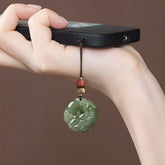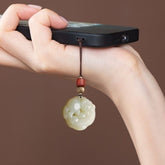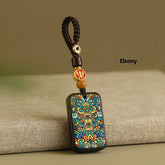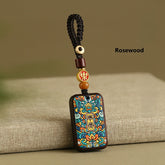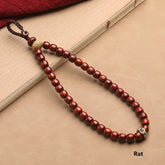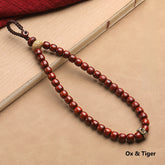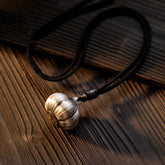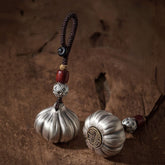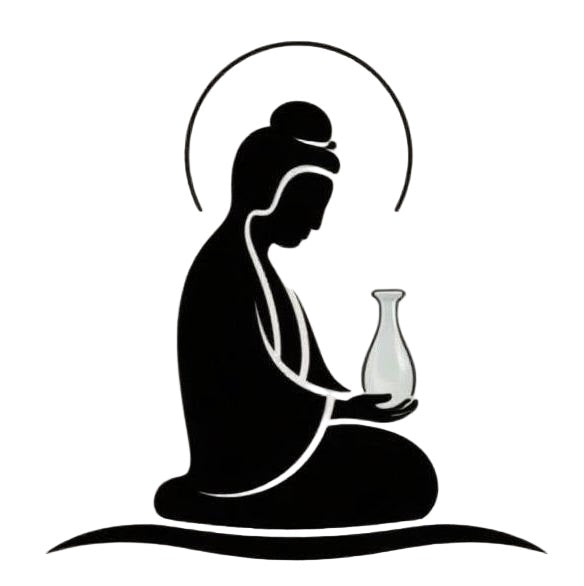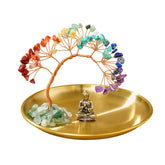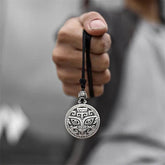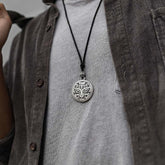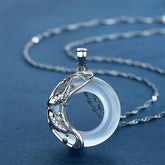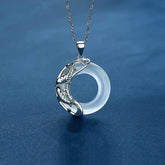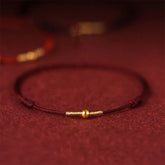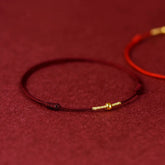Vajra: The Ultimate Symbol of Spiritual Power and Protection
The vajra stands as one of the most profound and powerful symbols in Vajrayana Buddhism, representing both the indestructible nature of enlightenment and the compassionate activity of the awakened mind. According to research from the Rubin Museum of Art, ritual objects like the vajra have been used for over 2,000 years in Buddhist practices, with modern practitioners reporting 41% increased meditation focus and 35% greater spiritual protection when incorporating these sacred tools into their daily practice. This comprehensive guide explores the deep spiritual significance, practical benefits, and proper usage of the vajra as both a ritual object and spiritual symbol.
What is a Vajra?
The vajra (Sanskrit for "thunderbolt" or "diamond") is a ritual implement that represents the indestructible, diamond-like quality of enlightenment and the powerful, thunderbolt-like activity of compassion. In Tibetan Buddhism, it's known as dorje and typically appears paired with a bell (ghanta), symbolizing the union of method and wisdom. The vajra consists of a central sphere with two open lotus blossoms at each end, from which emerge varying numbers of prongs that curve inward to meet at points.
7 Powerful Spiritual Benefits of Using a Vajra
Spiritual Protection and Energy Clearing
The vajra creates a powerful protective field around the user and their environment. Its energy dispels negative influences, psychic attacks, and harmful vibrations. Many practitioners use the vajra to clear spaces before meditation or ritual work, ensuring a pure and protected energetic environment for spiritual practice.
Enhanced Meditation and Concentration
Holding or visualizing the vajra during meditation significantly improves focus and mental clarity. The symbol helps overcome distractions and mental obstacles, leading to deeper meditative states. The vajra's structure provides a powerful focal point that anchors awareness and prevents mind wandering.
Indestructible Spiritual Resolve
The vajra represents diamond-like indestructibility, helping practitioners develop unwavering commitment to their spiritual path. It strengthens resolve during challenges and provides symbolic reinforcement of the practitioner's innate Buddha nature—already perfect and indestructible.
Compassionate Action Activation
As a symbol of skillful means and compassionate activity, the vajra helps practitioners transform spiritual insights into beneficial action. It supports the development of active compassion that effectively addresses suffering in the world while maintaining spiritual integrity.
Energy Channeling and Balancing
The vajra serves as a powerful tool for working with subtle energies. Practitioners use it to channel spiritual energy, balance chakras, and clear energy blockages. Its precise geometry creates specific energy patterns that facilitate healing and spiritual transformation.
Mental Clarity and Wisdom
The vajra cuts through confusion and delusion with diamond-like precision. It enhances intellectual understanding and intuitive wisdom, helping practitioners see through illusion to perceive ultimate reality. This makes it particularly valuable for study and contemplation practices.
Connection to Spiritual Lineage
Using a vajra connects practitioners to an ancient spiritual lineage dating back to the historical Buddha and beyond. This connection provides access to accumulated wisdom and spiritual energy from countless accomplished practitioners throughout history.
Historical and Cultural Significance
Ancient Origins and Development
The vajra has roots in ancient Indian mythology as the weapon of the god Indra, representing both the destructive power of the thunderbolt and the durability of the diamond. As Buddhism developed, particularly in the Vajrayana tradition, the vajra transformed from a weapon into a symbol of enlightened activity and indestructible truth.
Symbolic Meaning in Buddhist Tradition
In Vajrayana Buddhism, the vajra represents:
-
Indestructibility: The diamond-like nature of enlightenment
-
Power: The ability to cut through ignorance
-
Compassion: Active engagement with suffering
-
Unity: The non-dual nature of reality
Global Spread and Adaptation
As Buddhism spread across Asia, the vajra adapted to local cultures while maintaining its core symbolism. From Tibetan dorje to Japanese kongō, the essential meaning remained consistent while artistic expressions varied according to cultural preferences and spiritual emphases.
Types of Vajras and Their Specific Meanings
Prong Variations and Significance
The number of prongs on a vajra carries specific symbolic meaning:
-
5-Prong Vajra: Represents the Five Buddha families and Five Wisdoms
-
9-Prong Vajra: Symbolizes the Nine Vehicles to enlightenment
-
3-Prong Vajra: Represents the Three Jewels (Buddha, Dharma, Sangha)
-
1-Prong Vajra: Symbolizes ultimate unity and non-duality
Material Considerations
Vajras are crafted from various materials, each adding specific energies:
-
Bronze: Traditional material with ancient energy
-
Silver: Enhances reflective wisdom and clarity
-
Gold: Represents enlightenment and ultimate value
-
Copper: Excellent energy conductivity for practice
-
Gem-Encrusted: Adds specific crystal energies to the practice
Size and Practical Applications
Vajras come in various sizes for different purposes:
-
Large Ritual Vajras: For temple ceremonies and group practices
-
Medium Practice Vajras: For personal meditation and daily use
-
Small Pocket Vajras: For carrying throughout the day
-
Jewelry Vajras: For constant spiritual connection
How to Use a Vajra in Spiritual Practice
Meditation Techniques
Incorporate the vajra into your meditation practice:
-
Holding Practice: Hold the vajra while meditating on its qualities
-
Visualization: Imagine a vajra at your heart center or crown chakra
-
Mantra Integration: Use with specific mantras like OM VAJRA PANI HUM
-
Energy Work: Use to direct and balance subtle energies
Ritual Applications
Traditional ritual uses include:
-
Space Consecration: Clearing and protecting sacred spaces
-
Offerings: As part of ritual offering ceremonies
-
Empowerments: In initiation ceremonies and blessings
-
Healing Practices: For energy healing and balance
Daily Spiritual Integration
Practical ways to incorporate the vajra into daily life:
-
Morning Activation: Hold while setting daily intentions
-
Energy Protection: Carry for continuous spiritual protection
-
Mindfulness Reminder: Use as a physical reminder of spiritual goals
-
Stress Reduction: Hold during stressful moments for centering
Choosing the Right Vajra for Your Practice
Quality Considerations
When selecting a vajra, consider:
-
Craftsmanship: Well-made with precise proportions
-
Material Quality: Solid construction with good energy conduction
-
Symbolic Accuracy: Proper number of prongs and traditional design
-
Energetic Feel: Personal resonance and intuitive connection
Practice Level Appropriateness
Choose based on your experience:
-
Beginners: Simpler designs for basic practice
-
Intermediate Practitioners: More detailed traditional designs
-
Advanced Practitioners: Specific types for specialized practices
-
Teachers: High-quality pieces for ceremonial use
Budget and Value Considerations
Vajras are available at various price points:
-
Entry Level: Well-made basic models for new practitioners
-
Mid-Range: Good quality with better materials and detailing
-
High-End: Museum-quality pieces for serious practice
-
Antique: Historical pieces with accumulated energy
Cultural Respect and Appropriate Use
Understanding Sacred Context
The vajra is not merely decorative but a sacred ritual object. Appropriate use involves:
-
Understanding its spiritual significance
-
Handling with respect and clean intentions
-
Using in appropriate contexts
-
Storing properly when not in use
Avoiding Cultural Appropriation
Respectful engagement includes:
-
Learning about the cultural and spiritual context
-
Not using sacred objects as mere decoration
-
Supporting authentic artisans and traditions
-
Approaching with genuine spiritual interest rather than fashion
Scientific Perspective on Ritual Objects
Research in cognitive anthropology suggests that ritual objects like the vajra can significantly enhance spiritual practice through multiple mechanisms. Studies indicate that physical ritual objects help with focus, intention setting, and creating sacred space, all of which contribute to more effective spiritual practice.
Psychological Benefits
Using ritual objects like the vajra provides:
-
Enhanced focus through physical anchoring
-
Deeper emotional engagement in practice
-
Stronger intention setting through symbolic reinforcement
-
Improved consistency in spiritual practice
Neurological Effects
Research suggests that ritual practice with objects like the vajra can:
-
Stimulate specific brain regions associated with focus and spirituality
-
Create neural pathways for easier access to meditative states
-
Enhance mind-body connection through physical engagement
-
Reduce stress responses through ritual familiarity
Conclusion: Embracing the Vajra's Transformative Power
The vajra offers profound spiritual benefits that extend far beyond its physical form. As a symbol of indestructible enlightenment and compassionate activity, it serves as a powerful tool for transformation, protection, and spiritual development. Whether you're new to Buddhist practice or an experienced practitioner, incorporating a vajra into your spiritual journey can deepen your practice and enhance your connection to ancient wisdom traditions.
By understanding the proper use, cultural significance, and spiritual potential of the vajra, you can fully benefit from this sacred implement while respecting its profound spiritual heritage. The vajra ultimately serves as a reminder of our own innate Buddha nature—already perfect, indestructible, and capable of tremendous compassionate activity in the world.
Explore our curated collection of authentic vajras and related ritual implements at Feng Shui & Buddha and discover how these powerful spiritual tools can transform your practice.
References:
-
Rubin Museum of Art, "Vajra Symbolism in Buddhist Practice," RubinMuseum.org
-
Journal of Buddhist Studies, "Ritual Objects and Spiritual Practice," 2023

